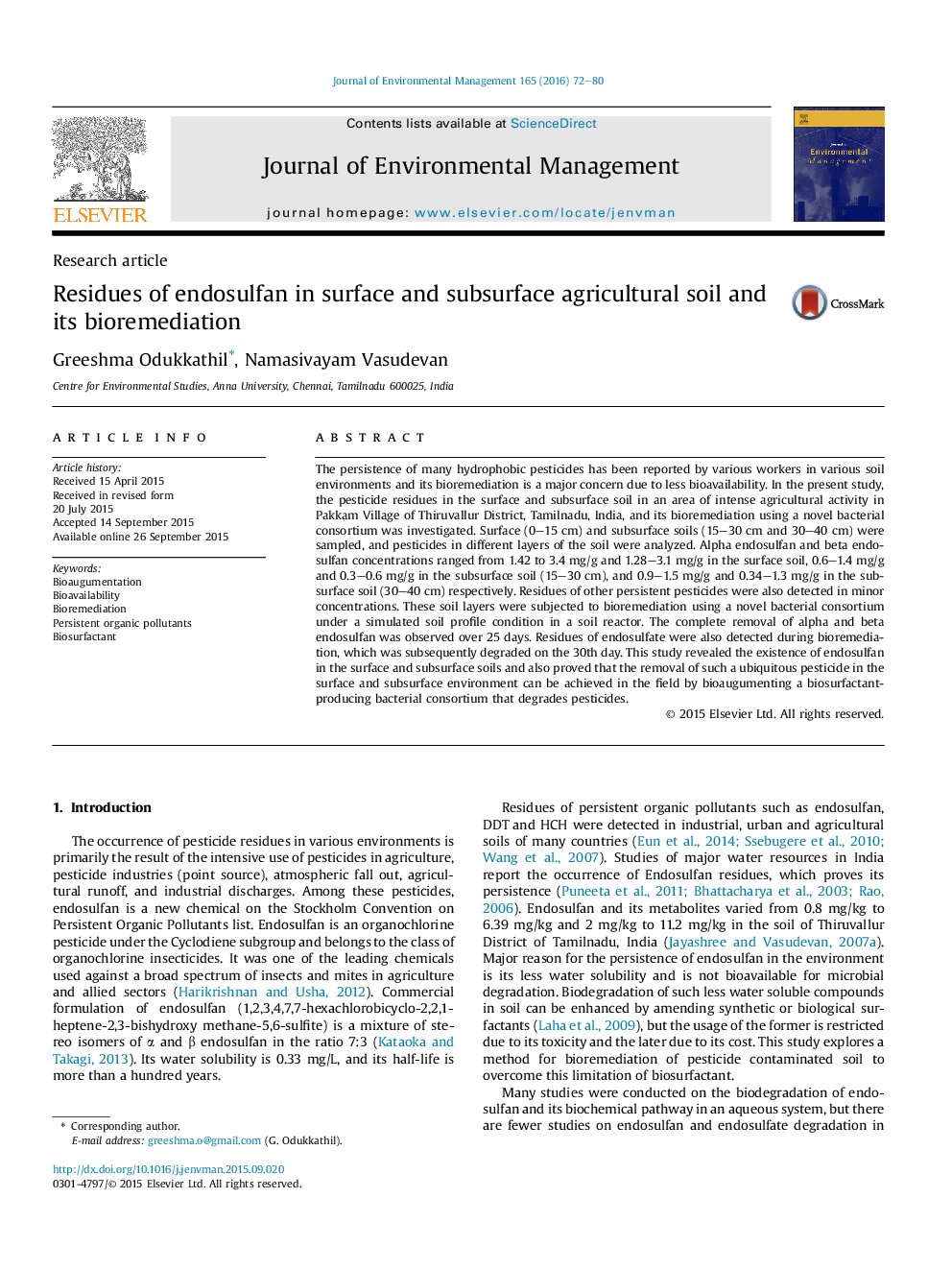| کد مقاله | کد نشریه | سال انتشار | مقاله انگلیسی | نسخه تمام متن |
|---|---|---|---|---|
| 1055475 | 1485247 | 2016 | 9 صفحه PDF | دانلود رایگان |
• Concentration of pesticides at different depths of agricultural soil is presented.
• Bioremediation of pesticide contaminated surface and subsurface soil is presented.
• Biosurfactant producing bacteria enhanced the degradation of pesticides.
• Bacterial community analysis proved the subsistence of bioaugumented bacteria.
The persistence of many hydrophobic pesticides has been reported by various workers in various soil environments and its bioremediation is a major concern due to less bioavailability. In the present study, the pesticide residues in the surface and subsurface soil in an area of intense agricultural activity in Pakkam Village of Thiruvallur District, Tamilnadu, India, and its bioremediation using a novel bacterial consortium was investigated. Surface (0–15 cm) and subsurface soils (15–30 cm and 30–40 cm) were sampled, and pesticides in different layers of the soil were analyzed. Alpha endosulfan and beta endosulfan concentrations ranged from 1.42 to 3.4 mg/g and 1.28–3.1 mg/g in the surface soil, 0.6–1.4 mg/g and 0.3–0.6 mg/g in the subsurface soil (15–30 cm), and 0.9–1.5 mg/g and 0.34–1.3 mg/g in the subsurface soil (30–40 cm) respectively. Residues of other persistent pesticides were also detected in minor concentrations. These soil layers were subjected to bioremediation using a novel bacterial consortium under a simulated soil profile condition in a soil reactor. The complete removal of alpha and beta endosulfan was observed over 25 days. Residues of endosulfate were also detected during bioremediation, which was subsequently degraded on the 30th day. This study revealed the existence of endosulfan in the surface and subsurface soils and also proved that the removal of such a ubiquitous pesticide in the surface and subsurface environment can be achieved in the field by bioaugumenting a biosurfactant-producing bacterial consortium that degrades pesticides.
Figure optionsDownload as PowerPoint slide
Journal: Journal of Environmental Management - Volume 165, 1 January 2016, Pages 72–80
